Looking for the right mic to use but you can’t decide whether you’ll need a Lavalier or a Boom Mic?
No worries, because we’ll help you figure that out right now.
Of course, when creating a video, you want the sound to be exceptionally good so that viewers can hear everything clearly. We must therefore select the right kind of microphone for you.
As a videographer, choosing the right microphone is very important—because the microphone you choose can make a huge difference in the quality of the sound you capture.
Did you know different microphones respond to background noise at different levels? For this reason, choosing the appropriate microphone can help you record the sound you want while reducing distracting background noise.
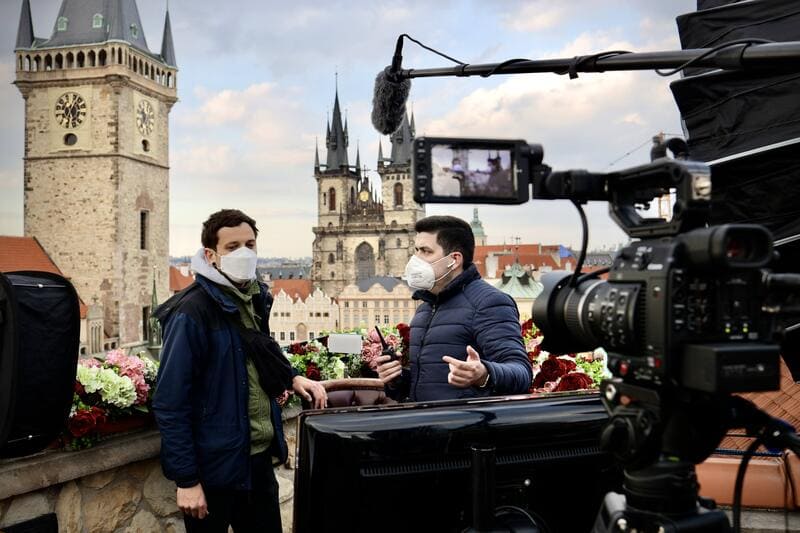
So, whether you’re conducting an interview, recording sound for a film, or shooting a live video or event, a Lavalier and boom mic have their own set of advantages and disadvantages.
In this extensive guide, we’ll take a deeper look at both types of microphones, discuss their differences, and provide recommendations on how to choose the correct microphone for your specific needs.
Even if you’re new to audio recording, by the end of this article, you’ll have a better understanding of which microphone is best for your recording situation.
But before we dig deeper into details, let’s learn first what exactly these microphones are and how they differ from each other.
What is a Lavalier Mic?
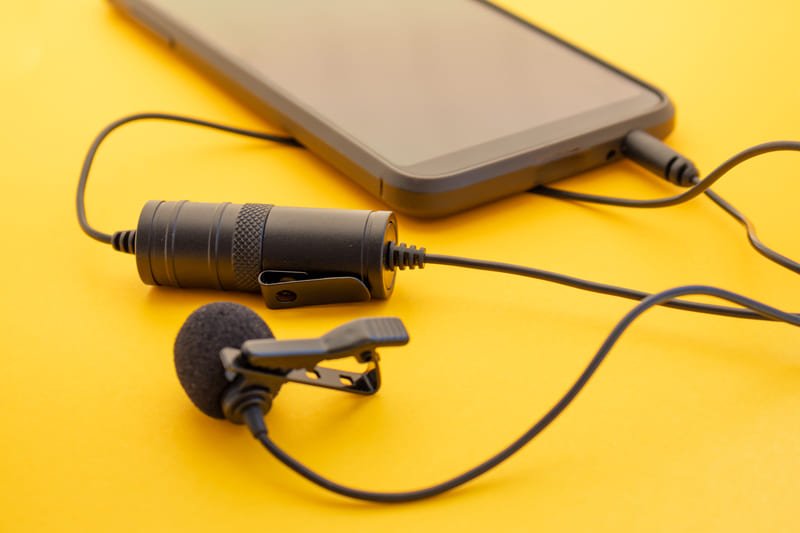
A lapel, lav, or lavalier microphone is a tiny device that fastens to clothing, typically close to the speaker’s chest or neck.
This mic is often used on television or in live events to capture what someone is saying without the microphone being seen.
There are two types of lavalier mics—wired and wireless. Of course, the wireless kind allows the person speaking to move around more freely without the need to hold a microphone.
Furthermore, because this microphone is placed close to the chest, it can take up audio with less background noise.
Other than television and live events, these Lavalier mics are also commonly used in interviews, presentations, speeches, and even some performances.
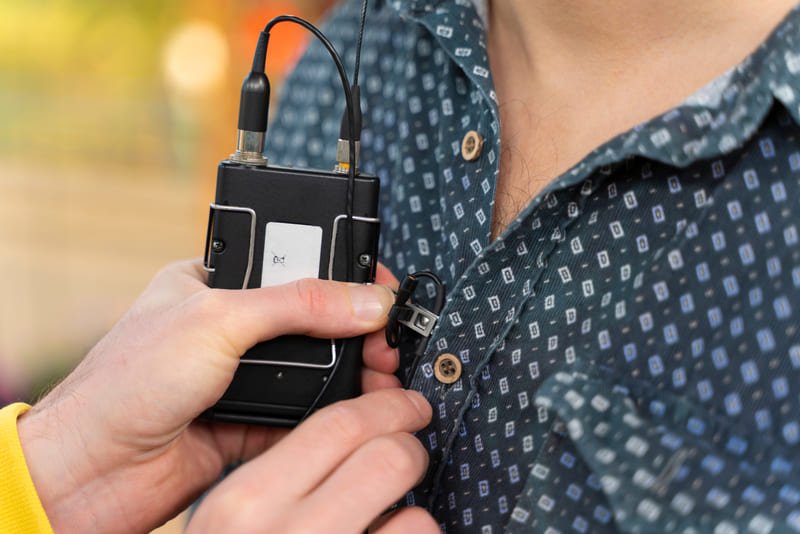
Pros:
- A Lavalier microphone can be fastened to clothing for hands-free operation. This allows you to use your hands for other duties.
- They are discreet because of their compact size, making them perfect for settings where the microphone shouldn’t be noticeable or bothersome.
- Lavalier microphones are good for close-up sound because they can capture the sound that is close to the source, which makes them perfect for capturing voice or dialogue.
Cons:
- Lav microphones have a limited range. It is less successful at picking up sound from a distance because they are made to take up sound close to the source.
- The kind of microphone may generate rustling sounds if it scrapes against clothing if it is not correctly placed.
- It’s not ideal for capturing ambient sound. Lavalier mics are not the best option for this kind of sound as they are designed to focus on a single source of sound only.
Best Recording Situations for a Lavalier Mic
If you need to move around while speaking, such as during a speech or interview, lavalier mics will absolutely work well for you. Additionally, it could be a great option for you if you don’t want your microphone to be seen.
Lavalier microphones are helpful for simultaneously recording several speakers, such as in a panel discussion. They can also help reduce background noise in loud environments, which makes it easier to hear what people are saying.
What is a Boom Mic?

A boom mic is a long microphone that’s mounted on a pole. It is also sometimes called a shotgun mic. This mic is commonly used by film creators in movies and TV shows to capture the sound that is happening on the set.
The boom mic is designed to only pick up the sound that’s in front of it, which helps to create a clear recording.
The person holding the boom mic is called a boom operator, and they have to follow the actors around the set to make sure they’re picking up the right sound.
Additionally, the extremely directional nature of this mic makes it easier to cut out background noise and produce clean recordings.
Boom microphones are a crucial instrument for recording high-quality sound on film and television sets, even if they might be a little challenging to operate.
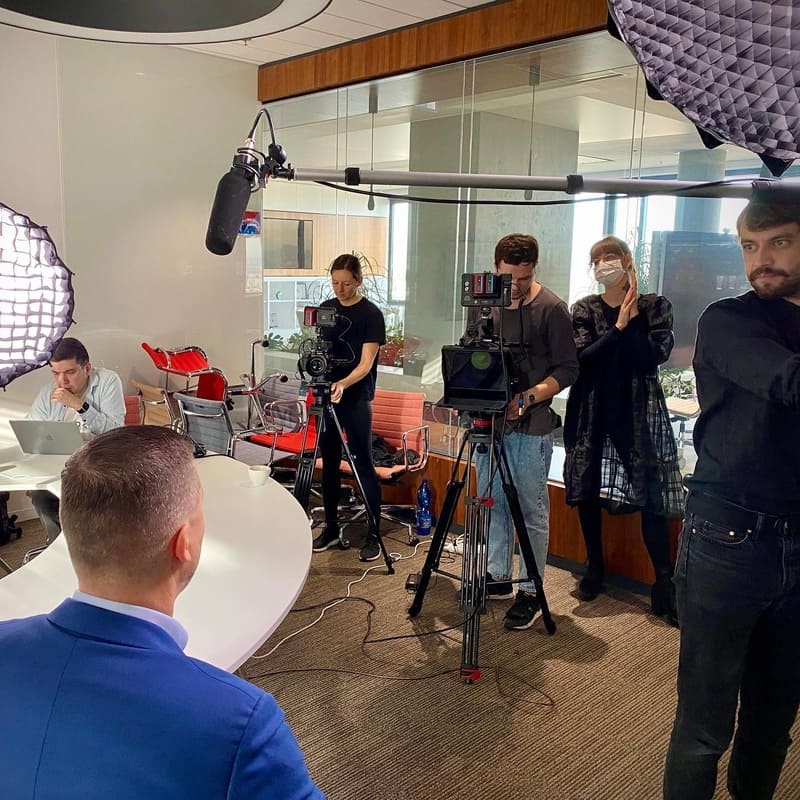
Pros:
- Boom mics have better audio quality because they are generally more sensitive compared to other types of microphones.
- These mics are very versatile because they can be used in a variety of settings, from film sets to live events.
- The boom operator can easily adjust the position of the microphone to capture the audio source they need. This allows them greater control over the audio recording process.
Cons:
- Using a boom mic requires skill and practice as it involves physical movement and coordination with the camera operator.
- The presence of a boom mic may be bothersome or distracting to the talent or audience, depending on the environment and circumstance.
- Boom mics typically have a limited range which means they need to be positioned close to the audio source in order to capture it clearly.
Best Recording Situations for a Boom Mic
Boom microphones will work great for you if you plan to record sounds that occur in a specific location, such as a conversation between two actors in a movie.
They may reduce background noise and concentrate on the music you want to record too, making them useful in noisy locations.
Undoubtedly, Boom microphones are crucial equipment for recording high-quality sound.
Pros & Cons of Lavalier & Boom Mic for Different Recording Situations

Indeed, having clear audio for your videos is an important part of the video production process. And with that, it’s essential to choose the right microphone for the job.
As we’ve been discussing, these two popular types of microphones for video production are the Lavalier and Boom mic. But how are they exactly working in different recording situations?
That’s what we’ll be discussing next.
Let’s have a look at the pros and cons of Lavalier and Boom mics and when you should or should not use them.
#1 Indoor Recording
Lavalier Mic

Pros:
- Even when the speaker is moving around, lavalier mics can record crystal-clear audio.
- These mics can also be hidden under clothing—making them less noticeable.
Cons:
- They can pick up background noise and some wind noise.
- These mics can also pick up rustling sounds if the mic rubs against your clothing.
- When using Lav mics, the speaker needs to stay within a certain distance from the mic.
Boom Mic
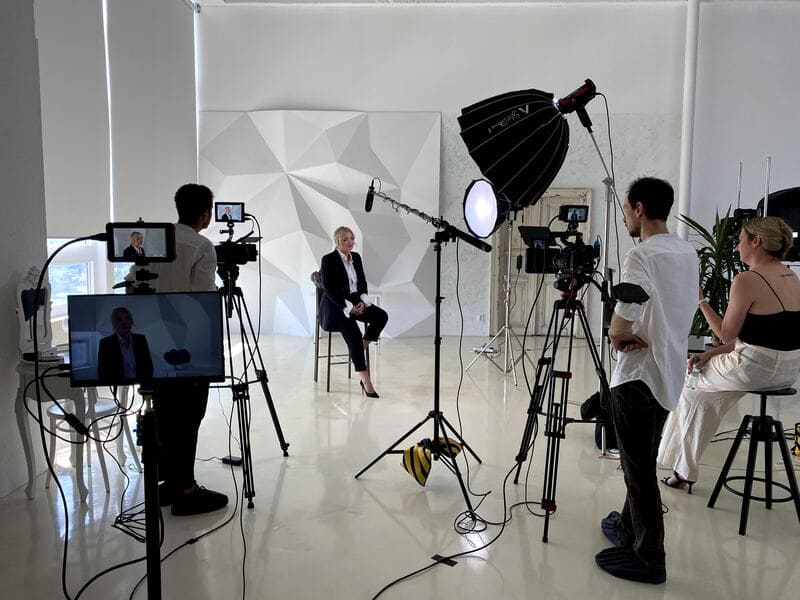
Pros:
- Boom mics can be placed near the speaker to record clear audio.
- These mics are for capturing sound effects or scripted dialogue in movies or TV shows.
- These can also be mounted on a stand. Hence, they are easy to move around.
Cons:
- Boom microphones need to be held and positioned by a person at all times.
- These mics can pick up more room noise and echo.
- Boom mics could be more obvious in the shot, which makes them less suitable in some circumstances.
Depending on your needs, a lavalier and boom mic can both be effective while recording inside. Usually, Boom mics work well for scripted dialogue or sound effects, while Lavalier mics are ideal for interviews or group discussions.
#2 Outdoor Recording
Lavalier Mic

Pros:
- For outdoor situations, Lavalier mics can capture clear audio even in windy conditions, as they are typically worn close to the speaker’s mouth.
- These are great for on-the-go recording because they are small and easy to carry.
- When it’s challenging to place a boom mic close enough to the speaker, Lavalier mics can be used.
Cons:
- When outside, it can also pick up rustling sounds if the mic rubs against your clothing or hair.
- Lavalier mics can pick up more background noise too such as traffic or birds chirping.
- These may also not capture the same level of depth and richness as a Boom mic.
Boom Mic

Pros:
- Boom mics can be positioned to record clear audio while cutting down on surrounding noise when outside.
- These microphones are perfect for sound effects or music recordings because they can also capture greater depth and richness in the audio.
- Boom mics offer more flexibility and control because they can be mounted on a stand or held by a boom operator.
Cons:
- In windy situations, boom mics can be challenging to position because they can take up unwanted noise and vibrations.
- Boom microphones can be difficult and expensive to transport around.
- Generally, Boom mics can be more expensive than Lavalier mics.
When recording outdoors, both lavalier and boom mic can be useful, depending on the situation. When making a decision, it’s critical to take the surroundings, the kind of sound you want to record, and the degree of control you require into account.
#3 Studio Recording
Lavalier Mic
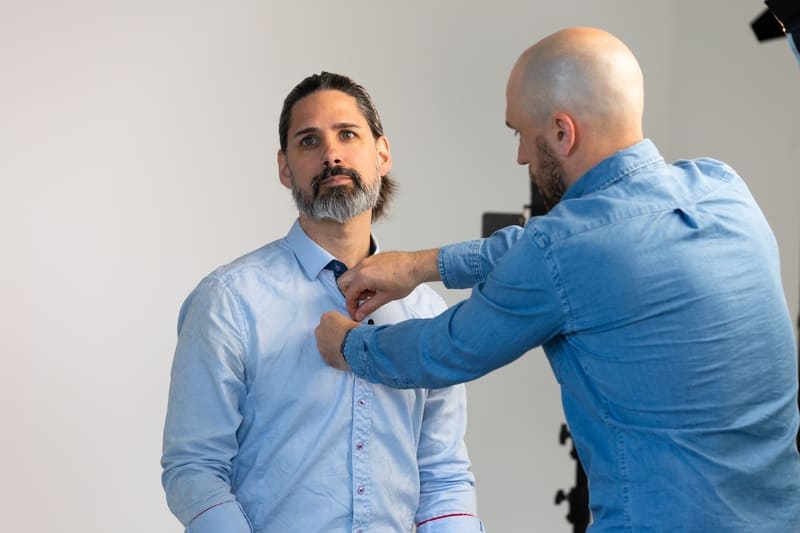
Pros:
- Can be clipped onto the subject’s clothing—allowing for free movement around the studio
- It’s less noticeable in the studio shots
- These mics work well for solo recordings or interviews with only one subject
Cons:
- It can detect undesirable noise, particularly if the subject is moving or there is wind.
- Lavalier mics are not as directional as Boom mics
- These mics may not work as well in larger studios or if multiple subjects are involved.
Boom Mic

Pros:
- These are directional, which means it only picks up sound from the direction it’s pointed in.
- Boom mics can help reduce unwanted noise and make audio sound clearer.
- These can be mounted on a stand, making them easier to use in a studio setting.
Cons:
- Depending on where it is positioned, it can be more noticeable in the shot.
- It requires a boom operator to hold and move the mic during recordings.
Both Boom and Lavalier microphones might be useful for studio recording. Boom mics are preferable for big studio setups with several subjects or for capturing directional sound, whereas lavalier mics are good for solo recordings or brief interviews.
#4 Documentary Recording
Lavalier Mic

Pros:
- They are very portable, making it easier to capture audio in crowded or busy settings—which are mostly the settings for some documentaries.
- Can be concealed from view to give the recording a more organic and real feel.
Cons:
- Its limited range and directionality make it less useful for recording background noise or distant sound.
- Lapel mics might need additional equipment to be used wirelessly, raising the cost of recording.
Boom Mic

Pros:
- It has excellent directional sound capture, which makes it perfect for gathering sounds from particular angles or distances.
- It works well for documentary outdoor recordings because it may be used with a windscreen to cut down on wind noise.
- It can be used with a shock mount to reduce handling noise to create a cleaner audio recording.
Cons:
- It is less portable and more challenging to operate in congested or confined locations since it requires additional equipment such as a Boom pole or a stand.
- Boom mics may pick up unwanted background noise or echo in larger rooms or spaces.
When making a documentary, it’s important to choose the right microphone for your specific situation.
Before filming, ask yourself questions like, “Do I need to capture audio from a distance or specific direction?” If the answer is yes, then a boom mic would be a better choice. If you need to capture audio in a busy environment, a Lav mic would be more appropriate.
#5 Live Event Recording
Lavalier Mic

Pros:
- Lavalier mics provide hands-free operation which allows freedom of movement in a live event.
- It can also be concealed easily which makes it less distracting.
- For live events, it can be used for multiple speakers, as long as each person can have their own Lapel mic.
Cons:
- It can pick up unwanted noise during a live event.
- The sound quality of the Lapel mic can be affected by the placement of the mic, such as if it’s rubbing against clothing or if it is placed too far from the speaker’s mouth.
- If not fully charged, It might run out of battery while the live event is still in place.
Boom Mic:
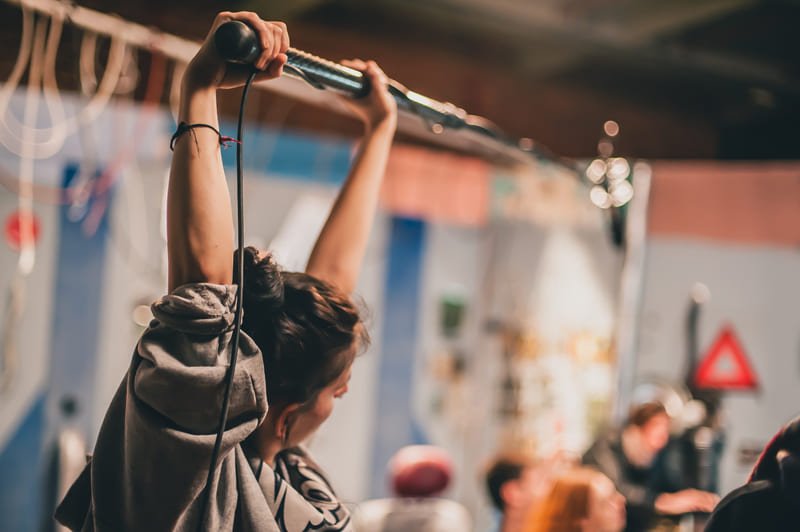
Pros:
- Boom mics can be placed nearer the sound source of the live event, which will improve the sound quality.
- It can be used to record background noise, such as cheers or crowd noise.
- These mics can be used with a boom pole to reach farther distances.
Cons:
- For live events, Boom mics can be heavy and tiring to hold for long periods of time.
- It requires an operator to hold and position the mic, which can be difficult in crowded or fast-moving events.
- Boom mics can be more visible and distracting to the audience.
A boom microphone is typically a preferable option for live event recording due to its directional nature and capacity to record sound from a distance. Lavalier microphones, however, are still effective for recording sounds from specific speakers or performances.
#6 Interview Setup Recording
Lavalier Mic

Pros:
- Lavalier mics allow the subject of the interview to look cleaner, more natural, and more professional.
- It’s hands-free and discreet, making the interview more comfortable for both parties.
- Lavalier mics are best for one-on-one interviews as recordings are more constant and clear, especially for subjects that move around.
Cons:
- It requires more setup time because placing and securing the mic on the interviewer and the interviewee can be time-consuming.
- It’s prone to picking up unwanted noises such as clothing rustling, and breathing.
- It may require additional equipment such as a wireless transmitter for larger interview setups.
Boom Mic
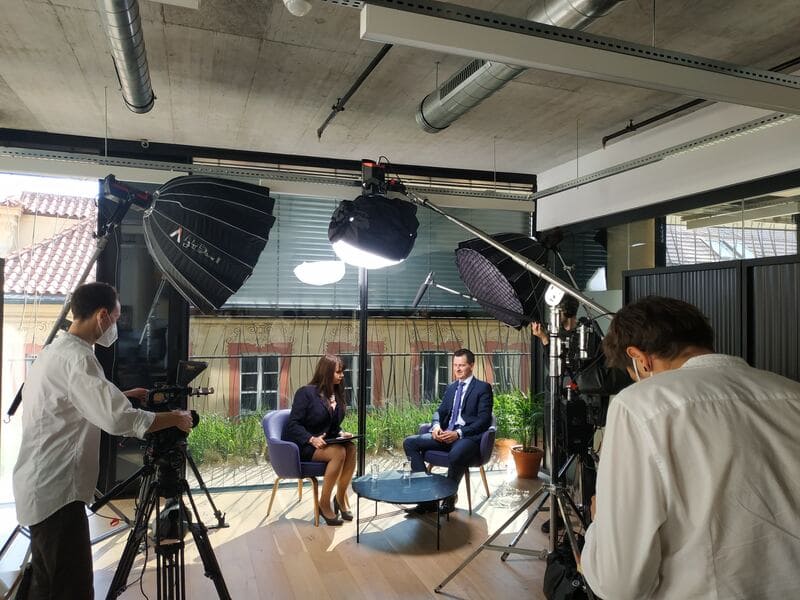
Pros:
- It’s more adaptable. t can be set up to record audio from several interviewers.
- It can pick up audio from multiple people at once so it’s a great choice for group interviews.
- Monitoring is simple and it’s easy to tweak better sound capture as needed.
Cons:
- Just like the other instances, it still requires additional equipment such as a boom pole.
- The microphone and boom pole may appear in the shot if not positioned correctly.
- Interviewees may feel intimidated by the visible microphone and may not act as naturally.
Both a Lavalier and Boom mic can be used for interview setups, depending on the specific circumstances.
However, Lavalier mics are generally better suited for situations where the interviewer and interviewee are stationary and not moving around too much, while Boom mics can be more versatile and allow for greater flexibility in capturing audio in different positions.
Factors to Consider
When choosing a microphone, it’s important to consider several factors to confirm that you select the right one for your recording situation. This includes taking into account the specific features and capabilities that are important for your recording needs.
Below are some factors to consider when choosing which microphone fits best for you:
#1 Recording Situation
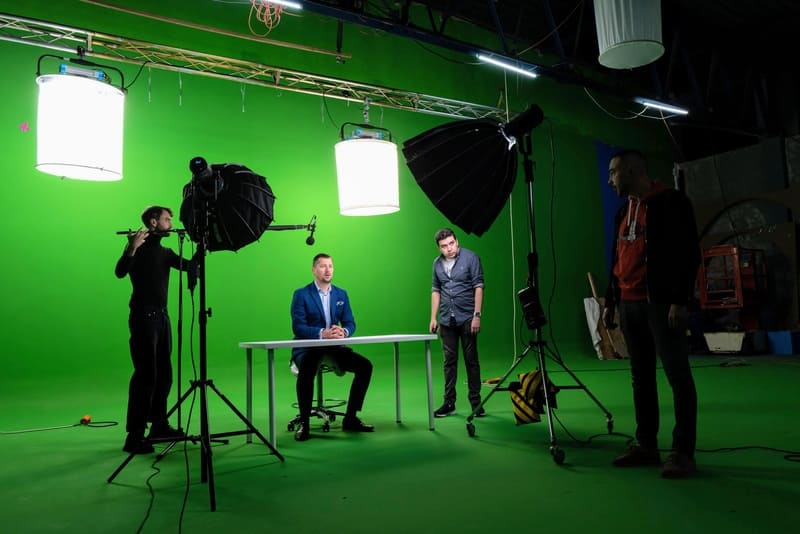
First, consider the location where you’ll be recording.
A Lavalier microphone might not be effective if the environment is very noisy because it might pick up that noise as well. However, a Boom microphone would be preferable if you were in a calm environment because it can record noises in greater detail.
#2 Movement

If you or your subject will be moving around during the recording, it’s best to use a Lav mic. Again, these mics can be clipped onto clothing or the body and move with the subject.
On the other hand, keep in mind that a Boom or a shotgun mic needs to be held by an operator and kept in a stationary position to capture sound properly.
#3 Distance

A Boom mic is more suitable when you need to capture sound from a distance, as it is capable of picking up sound from a greater distance.
In contrast, a Lapel mic is designed to capture sound from a closer range, so it’s a better choice for recording audio up close.
#4 Purpose

It’s best to think about your purpose, too. Think about “why” you are recording.
If you want to record a live event, choose a Lavalier mic to clearly capture the voices of the performers. However, if you are recording a film or video production and want to record dialogue, a Boom mic is a more useful option.
#5 Budget

Given that the costs of these microphones might vary, it’s critical to consider your budget when picking between Lavalier and Boom mics.
Boom microphones are typically more expensive than Lavalier mics, but it’s important to keep in mind that this may not always be the case, especially for the best professional gear.
Overall, when choosing a microphone, it’s important to consider the factors listed above so you get the best results for your recording.
Both Lavalier and Boom mics have their strengths and weaknesses for sure, so it’s important to weigh the pros and cons for each recording situation as well.
The ideal microphone option will ultimately depend on the particular needs and specifications of your certain project. So before settling on a particular microphone, HayotFilms recommend testing out a few various models first if you can.
Final Thoughts: Lavalier vs. Boom Mic
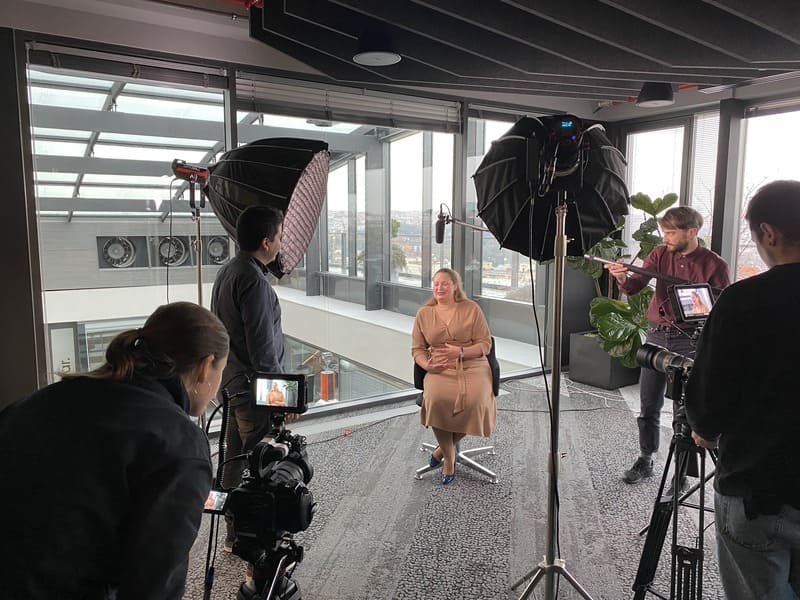
So there you have it, the pros and cons of a Lavalier and a Boom Mic for different recording situations.
Again, it all comes down to the type of recording you’re doing and what kind of sound you want to capture. Each microphone has its own strengths and weaknesses, so it’s important to choose the one that will work best for you.
Truth is, making a video can be complicated. But if you take the time to figure out what you need and what equipment will work best for you, you can create an amazing result.
If you want faster results crafted by a team of professional filmmakers, we’re also here for you!
We, at HayotFilms, can help you with anything you need when it comes to videography. We are based in Prague and we have a team of experienced videographers who can help you capture high-quality footage for your project.
Plus, we also have the latest equipment and technology to make sure that your footage looks and sounds great.
Indeed, choosing the right audio equipment is a very important part of filming.
In fact, it can make or break the final output of your video. This is because poor audio quality can make it hard for people to understand what is being said or take away from the overall experience of the video.
This is why microphones are crucial.
They capture sound and help to assure that it is of high quality.
So make sure to keep in mind to choose the right microphone to get the best results for your video.


